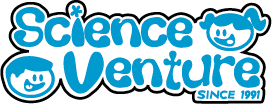Date: September 16, 2015 Time: 7:57am PT
Location: In transit to Ogden Point, BC Canada
Today is my last morning aboard the E/V Nautilus. On Tuesday evening, our last dive in the Strait of Georgia was exploring a glass sponge reef. The unique glass sponge reefs, off the coast of BC, are some of the shallowest reefs in the world. Glass sponges get their name from being very brittle and can be broken easily. BC recently created regulations to stop bottom fishing around these reefs. Glass grow on top of the skeletons of dead glass sponges forming these reefs, which is not see in other types of sponges. It was amazing to end the last dive of the season for the E/V Nautilus seeing these unusual creatures.
Both Remotely Operated underwater Vehicles (ROVs), Hercules and Argus, work together to bring the amazing video footage to the E/V Nautilus. Some ROVs have challenges when they are directly tethered to their ship. Argus is the tethered to the back of the E/V Nautilus and usually sits directly below the ship. From Argus there is a tether to Hercules that carries power and commutations to and from the ship. Hercules was designed for delicate work, but needs the tether to the ship. If it was directly tethered to the ship Hercules, would get moved every time the ship hits a wave. But Argus was designed to be very heavy so it absorbs the movement from the ship and then the tether from Argus to Hercules has no movement from the ship. Hercules can do very delicate work when exploring, since it is freed from the movement of the ship.
Hercules has two hydraulic arms which are used for a variety of tasks. On this mission, the arms were used to disconnect cables, and attach hooks to platforms for retrieval. For some missions, Hercules will have two bio boxes on board to bring back biology or geology samples. On this mission, the boxes were used to bring back ropes bungy cords so that nothing was left on the ocean floor.
It's been an amazing opportunity to be on board the E/V Nautilus and watching Hercules complete the maintenance on the Venus network. A big thank you to Ocean Networks Canada for asking Science Venture to be part of this leg of the mission.


